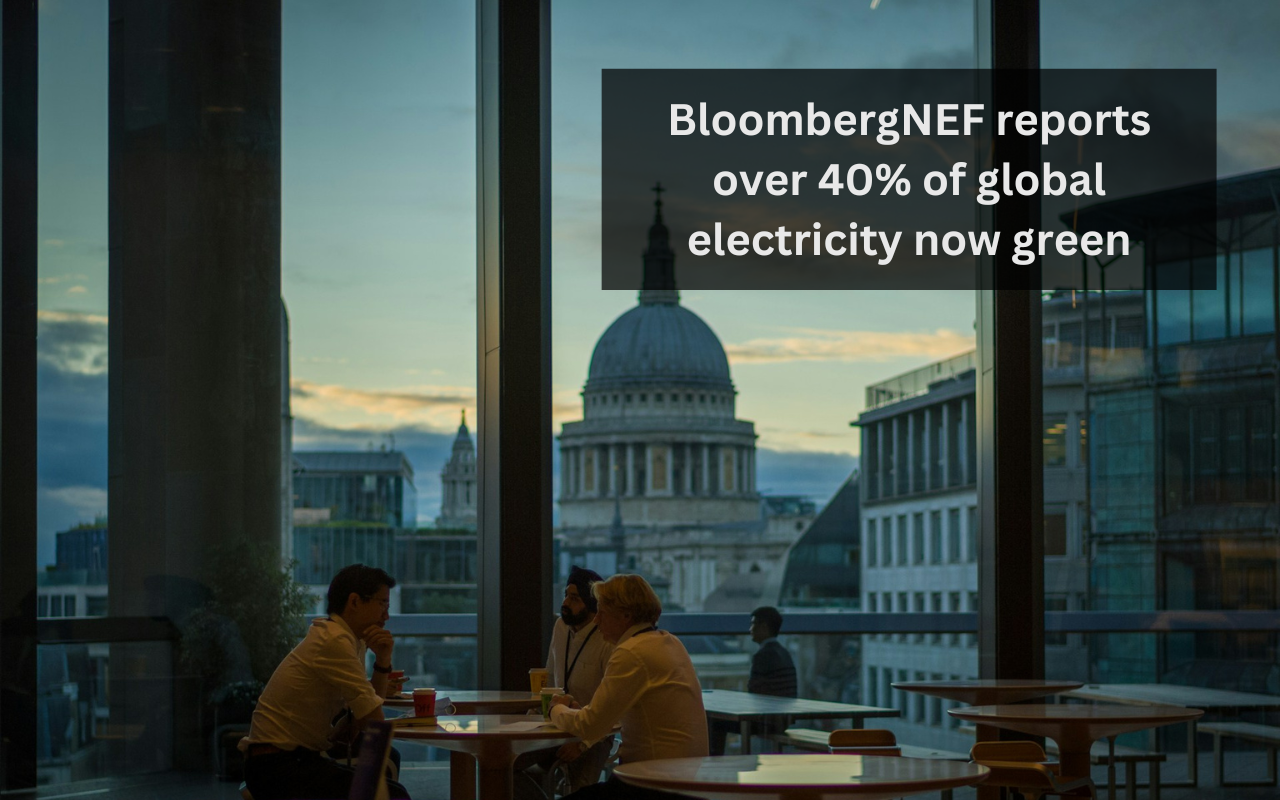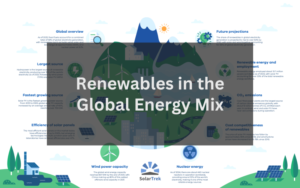Recent data has revealed that for the first time in history, over 40% of the world’s electricity came from zero-carbon sources in 2023. This milestone, which was published in BloombergNEF‘s report dated 27 August 2024, confirms that the world is seeing a rapidly accelerating shift towards renewable energy. Solar and wind power, contributing a record 14% each, have become pivotal in driving this green transition.
According to the BloombergNEF report “Power Transition Trends 2024,” the surge in renewable energy generation is complemented by an unprecedented decline in fossil fuel reliance, which now accounts for only 6% of new power capacity additions. Sofia Maia, lead author of the report, says, “We have seen a step-change in renewable energy compared to a few years before. There’s now no question this is the largest source of new power generation, wherever you go.”
Investments in renewable energy have also continued at a steady pace, reaching $313 billion in the first half of 2024 alone. The momentum is not just limited to installation but is also reflected in the operational capacities where solar energy capacity saw a 76% increase from the previous year, reaching a staggering total of 1.6 terawatts worldwide.

Key figures and global impact
The breakdown of power sources is quite revealing: hydropower generated 14.7% of global electricity, while the combined output from wind and solar reached an all-time high of 13.9%. This collective push has not only reshaped the energy landscape but also set new standards for what’s achievable in the transition toward cleaner energy.
Investments have consistently supported these advancements, with renewable sectors drawing $313 billion in the first half of 2024 alone, echoing the robust engagement from the previous year. This financial backing is crucial as it fuels ongoing projects and supports the infrastructure needed to overcome grid and permitting challenges, especially noticeable in the wind sector.
The geographical spread of renewable contributions also highlights a significant trend. With China at the forefront, producing nearly a third of the world’s renewable output, followed closely by the US, Brazil, Canada, and India, these regions collectively accounted for 60% of the global renewable energy last year. Such contributions underscore the global commitment to enhancing sustainable energy solutions.
Related reading: 10 Facts About Renewables in the Global Energy Mix
Investment trends and future projections
In the first half of 2024, $313 billion was invested in renewable energy projects, matching the investment levels from the same period in 2023. This sustained investment underscores the confidence in renewable energy’s future, despite challenges like cheaper equipment leading to lower investment needs and grid bottlenecks slowing growth in some regions.
China remains the dominant player, leading global investments, even as costs decrease. The United States follows closely, buoyed by policies like the Inflation Reduction Act, which has significantly boosted investment levels. Other countries, such as Pakistan, have also seen rapid growth, particularly in solar investments, marking a shift in the global renewable energy landscape.
The focus in the future will be on overcoming challenges such as grid capacity and permitting issues, particularly in the wind sector, to maintain and accelerate the progress in renewable energy adoption. Meredith Annex, lead author of the Renewable Energy Investment Tracker (also published by BloombergNEF), highlighted that while the investment in renewable energy remains strong, the development of wind and solar projects faces challenges. “Oil majors may be reducing their focus on renewable energy, but this hasn’t made a dent in global investment. It’s clear that if there are projects ready and able to move forward, the capital will come. The focus should be on simplifying wind and solar development around the world.”
Challenges and opportunities in the renewable sector
While overall investments in renewable energy remain strong, the landscape of distribution is not uniform across the board. The first half of 2024 saw a robust $221 billion funneled into solar energy, though the sector is encountering slowdowns. This reduction in required investment is partly due to less expensive modules and grid bottlenecks that delay projects. On the other hand, wind energy has experienced a sharper decline, especially in offshore ventures, largely attributed to regulatory hurdles and challenges related to grid integration.
China remains at the forefront of global renewable investment, continuing to lead despite a slight downturn due to the reduced costs of equipment. Meanwhile, the United States and Pakistan have surged ahead, fueled by policies such as the Inflation Reduction Act in the U.S., which significantly bolstered their renewable sectors.
Both the wind and solar industries face technical obstacles that impede faster deployment. For wind energy, the main issues include frequent complications with grid interconnection and obtaining necessary permits. The solar industry struggles primarily with scaling up production and integrating new installations into the existing grid without causing disruptions. These technical challenges require innovative solutions and regulatory adjustments to ensure the continued growth and effectiveness of renewable energy projects worldwide.

Global leaders in renewable energy
China continues to stand out as the most dominant force worldwide, having been the largest producer of renewable energy for over a decade. In 2023 alone, China was responsible for nearly 1/3 of the global output.
Following China, the United States, Brazil, Canada, and India make up the top five global players, collectively accounting for 60% of the world’s renewable generation last year. The U.S. has seen substantial growth in renewable investments, particularly following the Inflation Reduction Act, which has provided a significant boost to the sector. Similarly, Pakistan has made significant advances, climbing to become the 5th largest market for new solar investments in 2024, up from 14th the previous year.





